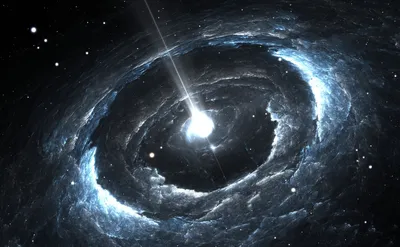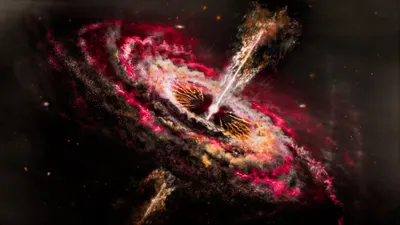1. Black Holes

The most mysterious and powerful objects in the universe, black holes are formed when massive stars die and collapse in on themselves. They have such intense gravity that not even light can escape, making them invisible to the naked eye. Scientists continue to study these enigmatic objects, hoping to unlock the secrets of the universe.
2. Neutron Stars

Neutron stars are incredibly dense and small, with the mass of the sun crammed into a sphere only a few miles in diameter. They are formed when a massive star explodes in a supernova, leaving behind a tiny, incredibly dense core. Neutron stars are also home to some of the most extreme conditions in the universe, with intense magnetic fields and temperatures reaching millions of degrees.
3. Gamma Ray Bursts

Gamma ray bursts are some of the most violent and energetic events in the universe, releasing more energy in a few seconds than the sun will in its entire lifetime. They are thought to be caused by the collision of two neutron stars or a neutron star and a black hole. Despite their incredible power, scientists still don't fully understand what causes gamma ray bursts.
4. Dark Matter

Dark matter is a mysterious substance that makes up roughly 85% of the matter in the universe. It does not interact with light or other forms of electromagnetic radiation, making it invisible to telescopes. Scientists know it exists because of its gravitational effects on visible matter, but they still don't know what it is made of or how it behaves.
5. Quasars

Quasars are some of the brightest objects in the universe, shining with the light of billions of stars. They are thought to be powered by supermassive black holes at the centers of galaxies, which are devouring huge amounts of gas and dust. Quasars are also some of the most distant objects in the universe, with some located billions of light-years away.
6. Pulsars

Pulsars are highly magnetized neutron stars that emit beams of electromagnetic radiation from their poles. These beams can be detected as regular pulses of light, hence the name. Pulsars were first discovered in 1967 and have since been used to study everything from general relativity to the properties of matter at extreme densities.
7. Supernovae

Supernovae are some of the most dramatic events in the universe, marking the explosive deaths of massive stars. They can briefly outshine entire galaxies and release huge amounts of energy and matter into space. Supernovae are also responsible for creating many of the elements in the universe, including the carbon and oxygen that make up our bodies.
8. Interstellar Clouds

Interstellar clouds are vast, diffuse regions of gas and dust that fill the space between stars. They are thought to be the birthplaces of stars and planets, as the clouds can collapse under their own gravity to form new objects. Interstellar clouds also contain many of the building blocks of life, including water and organic molecules.
9. The Cosmic Microwave Background

The cosmic microwave background is the afterglow of the Big Bang, the moment when the universe began. It is a faint glow of radiation that fills the entire sky, and it is thought to be the oldest light in the universe. Scientists study the cosmic microwave background to learn about the early universe, including its age, composition, and evolution.
10. Gravitational Waves

Gravitational waves are ripples in the fabric of spacetime, caused by the movement of massive objects like black holes and neutron stars. They were first predicted by Einstein's theory of general relativity, but it wasn't until 2015 that scientists were able to detect them directly. Gravitational waves offer a new way to study the universe, allowing scientists to observe phenomena that are invisible to traditional telescopes.
